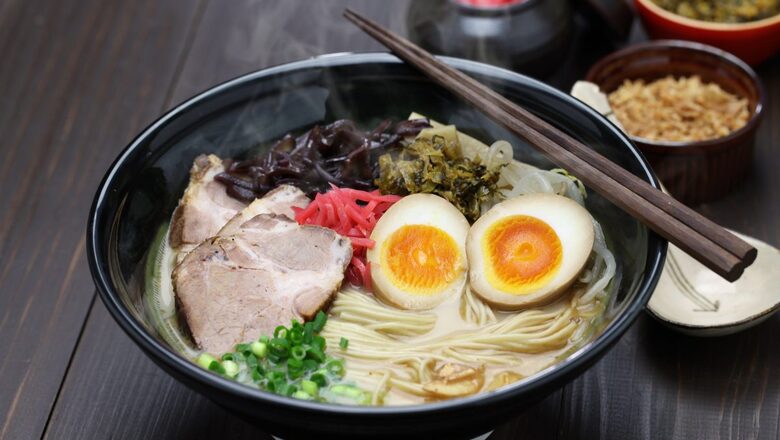
views
Japanese cuisine has become increasingly popular in recent years, with sushi and ramen being some of the most well-known dishes. However, there are many more delicious and unique options to try at a Japanese restaurant. From savory to sweet, these dishes are sure to tantalize your taste buds and give you a glimpse into the diverse and delicious world of Japanese cuisine. So, whether you’re a seasoned sushi lover or a newcomer to Japanese food, read on to discover some of the best dishes that a Japanese restaurant has to offer.
When it comes to a bowl of Ramen, the broth and the Tare (flavouring base of the soup) are the heart and soul of the dish.
There are 2 types of broths at Long Finish, a Japanese restaurant:
- Paitan (Kotteri style) – Paitan refers to a type of broth that is made by boiling and simmering chicken/ pork bones and vegetables for an extended period of time to extract the collagen and other nutrients. The broth is then strained to create a smooth and creamy consistency.
- Chintan (Asari style) – Chintan refers to a clear broth that is made by simmering chicken bones and vegetables for an extended period of time. A Chintan broth is much lighter and clearer textured than a paitan.
There are 3 types of Tare at the Long Finish restaurant
- Shoyu: one of the oldest type of Tare! It uses salt + soy as basis of salinity, it’s powerful and cuts through the taste of the base soup due to the added layer of soy.
- Shio: Uses only salt as the basis of the salinity, enhances base soup flavour and often has dried fish products (vegan tare has a different prep)
- Miso (made by fermenting soy): One of the newest tare style, it adds a funky, rich and sweetly nutty slight fermented tangy/zingy taste profile to the bowl. There are different types of miso, varying in intensity eg. light miso/ dark miso/ red miso. With this background, it becomes easier to understand the different options of ramen on offer.
5 Foods which are a must-try at a Japanese restaurant:
- Pork Tonkotsu Ramen: Pork bone Paitan broth with slices of Belgian pork chashu, choice of oil: mayu (burnt garlic oil) or rayu (Japanese chilli oil), menma (seasoned and marinated bamboo shoots), sweet ginger pickle, cloud ear mushroom, scallion, nori and an ajitama egg (“aji,” meaning flavour, and “tama,” meaning egg). Chef’s recommendation: (tare: shoyu | oil: mayu)
- Chicken Chintan: Chicken chintan broth with thin slices of chicken (thigh) chashu, choice of oil: garlic scallion chiyu/ chicken oil or rayu (Japanese chilli oil), greens: leek and micro-greens, chilli threads, wakame (edible kelp), nori strips and an ajitama egg (“aji,” meaning flavour, and “tama,” meaning egg. Chef’s recommendation: (tare: shio | oil: Negi garlic chiyu).
- Chicken Tantanmen Ramen (Spicy): Chicken bone Paitan broth that’s spicy and nutty served with nikumiso style chicken mince (traditional tantanmen mince), wakame (edible kelp), sweet ginger pickle, scallion, blanched spinach, nori stips and an ajitama egg (“aji,” meaning flavour, and “tama,” meaning egg).
- Vegan Tonkotsu : Mushroom and oat mlk Paitan broth with tofu chashu slices, choice of oil: mayu (burnt garlic oil) or rayu (Japanese chilli oil), menma (seasoned and marinated bamboo shoots), sweet ginger pickle, cloud ear mushroom, scallion and nori. Chef’s recommendation: (tare: shoyu | oil: mayu).
- Naruto’s Ramen : Pork bone broth with extra slices of pork chashu, Miso tare, choice of oil: Mayu (burnt garlic oil) or rayu (Japanese chilli oil), menma (seasoned and marinated bamboo shoots), narutomaki (fish cake), scallion, nori and an ajitama egg (“aji,” meaning flavour, and “tama,” meaning egg)
Read all the Latest Lifestyle News here




















Comments
0 comment